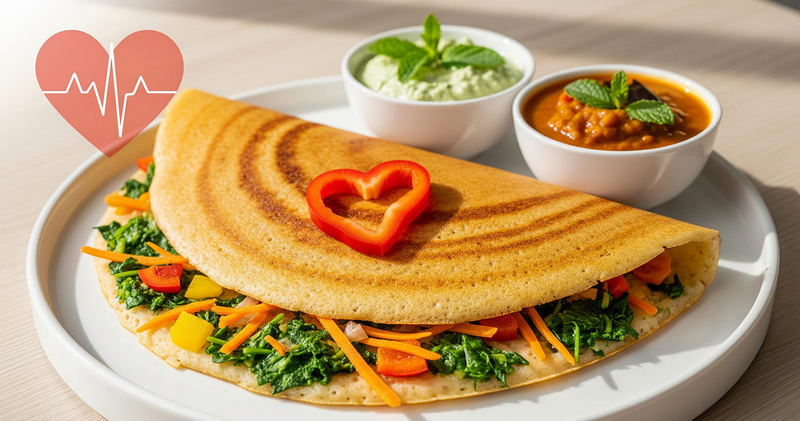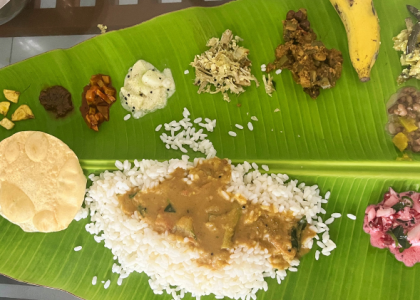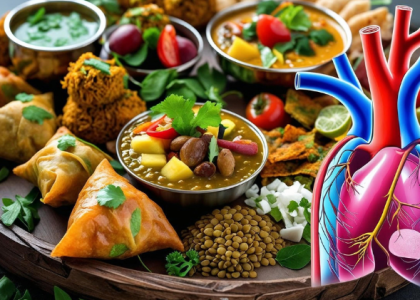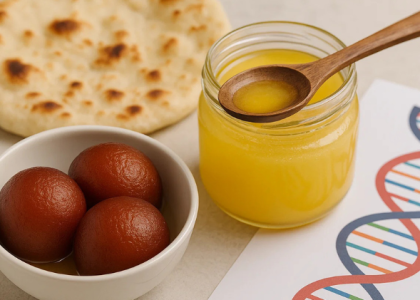Is Dosa Good or Bad for Your Heart?
Dosa is comfort food for many South Asians. Crispy, tasty, and perfect with chutney and sambar. But is it safe for your heart?
South Asians consume the highest amount of rice in their daily diets and are at highest risk of developing diabetes. Carbohydrates such as rice make up 70-75% of South Asians’ total diet. Here’s the truth about dosa and your heart health.
What’s Really in Your Dosa?
Dosa seems simple, but let’s look closer. Traditional diets earlier consisted of mainly hand-pounded rice and other coarse grains like barley, rye, and maize. These have now been replaced by highly polished white rice in several Asian countries.
Simple carbohydrates are sugars that your body breaks down very fast. When you eat white rice or refined flour, your blood sugar spikes quickly. This is different from complex carbohydrates found in whole grains, which digest slowly.
The main problem? White rice has a high glycemic index, because it gets digested quickly and thus, quickly spikes the body’s blood sugar levels.
Why South Asians Face Higher Risk
Insulin resistance happens when your body needs more insulin to control blood sugar. South Asians have a special challenge here.
We digest rice faster than other groups!
Asians showed a higher insulin resistance rate than Arab and European participants. Research shows that our bodies react much more strongly to rice than other ethnic groups. When we eat the same amount of rice, our blood sugar goes up 2-3 times higher than Europeans.
High-carbohydrate meal consumption was reported to cause hyperinsulinaemia, postprandial hyperglycaemia and hypertriacylglycerolaemia in South Asian adults.
The Hidden Heart Connection
When you eat too much simple carbs like white rice, several things happen to your heart:
- Blood sugar spikes fast
- Your body makes extra insulin
- Over time, this creates insulin resistance (when insulin stops working well)
- This leads to belly fat, high blood pressure, and heart disease
High consumption of white rice and noodles may lead to high dietary glycaemic index and glycaemic load, which have been suggested to increase the risk of type 2 diabetes through excess postprandial variations in blood glucose and insulin concentrations.
Smart Ways to Enjoy Dosa
Should you stop eating dosa? Absolutely not!
You can make it heart-friendly with these simple changes:
Control your portions
- Eat 1 dosa, not 3
- Make it smaller and thinner
Add protein power
- Always eat sambar or dal with your dosa
- Regular consumption of lentils, along with other pulses, is associated with reduced risk for cardiovascular disease and type 2 diabetes
- Try an egg white or paneer on the side
Boost the fiber
- Add vegetables inside your dosa
- Eat a small salad first
- Choose coconut chutney over sugary chutneys
Cook it smart
- Use less oil
- Avoid soaking in ghee or butter
- Try non-stick pans
The Lentil Solution
Here’s good news: traditional South Indian meals were actually heart-healthy! South Indians predominantly eat a diet consisting of boiled rice and sambar.
Eating cooked lentils for breakfast, a glycemic indexed meal, improves glycemic management in people with type 2 diabetes by reducing total cholesterol and fasting blood glucose levels.
When you eat lentils (dal or sambar) with rice, the protein and fiber slow down sugar absorption. This keeps your blood sugar steady and your heart happy.

Your Action Plan
Start these changes today:
- Never eat dosa alone – always pair with sambar
- Make vegetables 50% of your plate
- Eat slowly and mindfully
- Choose whole grain versions when possible
Replacing highly polished white rice with other cereals or healthier varieties of rice or by adding adequate legumes and pulses may not only help to reduce the GI of the meal but also, possibly, to reduce the actual quantity of white rice consumed.
The Bottom Line
Dosa isn’t bad for your heart – but how you eat it matters. South Asians face unique challenges with insulin resistance, but smart food choices can protect your heart while keeping your favorite foods.
Small changes make a big difference. You can enjoy dosa and keep your heart healthy at the same time.
Learn More: “Heart Tests Every South Asian Should Know” | SouthAsianHeart.com
If you found this useful, please share this page with your family and friends. Small changes save lives!
References:
- Bhavadharini, B. et al. “White Rice Intake and Incident Diabetes: A Study of 132,373 Participants in 21 Countries.” Diabetes Care, 2020.
- Misra, A. et al. “South Asian diets and insulin resistance.” British Journal of Nutrition, 2008.
- Camps, S.G. et al. “Ethnic Variability in Glucose and Insulin Response to Rice Among Healthy Overweight Adults: A Randomized Cross-Over Study.” PMC, 2023.
- Kataoka, M. et al. “Glycaemic responses to glucose and rice in people of Chinese and European ethnicity.” Diabetic Medicine, 2013.
- The Swaddle. “White Rice Consumption Linked to Increased Diabetes Risk In 21-Country Study.” 2024.
- Ramdath, D.D. et al. “Effect of Processing on Postprandial Glycemic Response and Consumer Acceptability of Lentil-Containing Food Items.” Foods, 2018.




